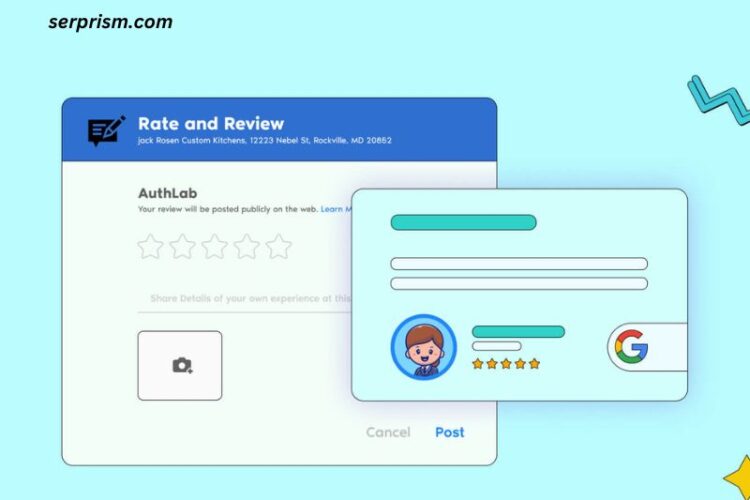
In the dynamic landscape of digital marketing, crafting compelling content that ranks well on search engines SEO is a crucial aspect of any successful SEO strategy. One powerful technique to achieve this is the strategic use of content angles. In this article, we’ll explore the concept of content angles, their importance in SEO, and provide you with a diverse range of examples to inspire your own content creation efforts.
What is a Content Angle in SEO?
A content angle in SEO refers to the unique perspective, focus, or approach you take when creating content. It’s the specific lens through which you present information to your target audience. Content angles help you differentiate your content from the competition, address the specific needs and pain points of your audience, and improve the overall visibility and engagement of your website in search engine results.
Importance of Using Content Angles in SEO
Employing content angles in your SEO strategy offers several key benefits:
- Improved Relevance: By tailoring your content to address specific user queries or needs, you can enhance the relevance of your content, making it more likely to rank higher in search engine results.
- Increased Engagement: Unique content angles can capture the attention of your target audience, encouraging them to engage with your content and ultimately take the desired actions, such as making a purchase or signing up for a service.
- Differentiation from Competitors: Crafting content with distinct angles can help you stand out in a crowded market, positioning your brand as a unique and valuable resource for your audience.
- Enhanced Search Visibility: Search engines prioritize content that provides the most relevant and valuable information to users. By leveraging content angles, you can improve your website’s visibility and ranking in search engine results pages (SERPs).
Types of Content Angles for SEO
When it comes to content angles for SEO, there are several approaches you can consider:
- Problem-Solving Angles: These angles focus on addressing specific problems or pain points that your target audience is experiencing. The content aims to provide practical solutions and valuable insights to help your audience overcome these challenges.
- Comparative Angles: Comparative angles involve comparing your products, services, or industry insights to those of your competitors. This can help your audience make informed decisions and position your brand as a thought leader.
- Niche-Specific Angles: Niche-specific angles cater to the unique needs and interests of a particular segment of your target audience. By tailoring your content to a specific niche, you can establish your brand as an authority in that domain.
- Trend-Based Angles: Trend-based angles capitalize on current industry trends, emerging technologies, or popular topics that are relevant to your target audience. This can help you stay ahead of the curve and provide timely, valuable information.
- Storytelling Angles: Storytelling angles leverage narratives and personal experiences to connect with your audience on an emotional level. This can help build brand loyalty and enhance the overall engagement with your content.
How to Come Up with Content Angles for SEO
Developing effective content angles for SEO requires a deep understanding of your target audience, industry trends, and the competitive landscape. Here are some steps to help you identify and refine your content angles:
- Conduct Keyword Research: Analyze the search terms and queries that your target audience is using to find information related to your products, services, or industry. This can help you identify the pain points, interests, and informational needs of your audience.
- Analyze Your Competitors: Examine the content strategies and angles used by your competitors. Identify any gaps or opportunities where you can differentiate your content and provide unique value to your audience.
- Leverage Customer Insights: Gather feedback and insights from your existing customers or target audience. Understand their challenges, preferences, and the type of content they find most engaging and valuable.
- Brainstorm Unique Perspectives: Engage in ideation sessions to generate a diverse range of content angles that can address the needs of your target audience from different perspectives.
- Test and Iterate: Experiment with various content angles, monitor their performance, and continuously refine your approach based on the data and feedback you receive.
Content Angle Examples for Product-Based Websites
1. Angle: Solving a Specific Problem
- Example: “How to Reduce Shipping Costs for Your Small Business”
- This angle focuses on addressing the pain point of high shipping costs for small business owners, providing practical tips and strategies to help them optimize their shipping processes and reduce expenses.
2. Angle: Comparative Analysis
- Example: “Comparing the Top 5 Wireless Headphones on the Market”
- This angle compares the features, performance, and value propositions of leading wireless headphone models, helping your audience make an informed purchasing decision.
3. Angle: Niche-Specific Expertise
- Example: “The Ultimate Guide to Choosing the Right Outdoor Gear for Rock Climbing”
- This angle caters to a specific niche of rock climbers, providing comprehensive guidance on selecting the appropriate outdoor gear and equipment for their sport.
Content Angle Examples for Service-Based Websites
1. Angle: Addressing Industry Trends
- Example: “How Artificial Intelligence is Transforming the Future of Legal Services“
- This angle explores the impact of emerging technologies, such as AI, on the legal services industry, positioning your brand as a thought leader and innovator.
2. Angle: Personalized Recommendations
- Example: “The 7 Financial Planning Strategies Every Millennial Should Know”
- This angle provides tailored financial planning advice and recommendations specifically for a millennial audience, demonstrating your expertise and understanding of their unique needs.
3. Angle: Overcoming Challenges
- Example: “5 Proven Strategies to Reduce Employee Turnover in the Healthcare Industry”
- This angle addresses a common challenge faced by healthcare organizations, offering practical solutions to improve employee retention and enhance the overall quality of patient care.
Content Angle Examples for Informational Websites
1. Angle: Leveraging Storytelling
- Example: “From Startup to Success: The Inspiring Journey of Jane Doe, Founder of XYZ Company”
- This angle uses a personal narrative to inspire and motivate your audience, showcasing the success story of an entrepreneur and the lessons they learned along the way.
2. Angle: Providing Comprehensive Guides
- Example: “The Ultimate Guide to Sustainable Living: 50 Easy-to-Implement Tips for a Greener Lifestyle”
- This angle offers a comprehensive, in-depth guide on a specific topic, positioning your brand as a reliable and authoritative source of information.
3. Angle: Debunking Common Myths
- Example: “5 Myths About Investing in Cryptocurrencies (and the Truth Behind Them)”
- This angle challenges commonly held beliefs or misconceptions about a particular topic, providing factual information and insights to educate and inform your audience.
How to Optimize Your Content Angles for SEO
To ensure your content angles are effectively optimized for SEO, consider the following strategies:
- Conduct Thorough Keyword Research: Identify the primary and secondary keywords associated with your content angles, and incorporate them strategically throughout your content.
- Optimize On-Page Elements: Ensure that your page titles, meta descriptions, headings, and subheadings effectively communicate your content angles and target keywords.
- Leverage Internal and External Linking: Link your content angles to relevant pages within your website, as well as to authoritative external sources, to improve the overall structure and flow of your content.
- Incorporate Multimedia Elements: Enhance your content with visuals, videos, or interactive elements that complement and reinforce your chosen content angles.
- Monitor and Analyze Performance: Regularly track the performance of your content angles, including metrics such as organic traffic, engagement rates, and conversions. Use this data to refine and improve your approach over time.
Measuring the Success of Your Content Angles in SEO
To evaluate the effectiveness of your content angles in SEO, consider the following key performance indicators (KPIs):
- Organic Traffic: Monitor the number of visitors arriving at your website through organic search channels, and analyze how content angles impact this metric.
- Engagement Metrics: Measure the time spent on your content, bounce rates, and the number of pages visited per session to gauge the level of engagement with your content angles.
- Conversion Rates: Track the percentage of visitors who take the desired action, such as making a purchase or signing up for a service, as a result of your content angles.
- Backlinks and Domain Authority: Assess the number of high-quality backlinks pointing to your content, as well as the overall domain authority of your website, as indicators of the credibility and authority of your content angles.
- Search Engine Rankings: Monitor your website’s rankings for the target keywords associated with your content angles, as this directly impacts your visibility and discoverability in search results.
By consistently monitoring and analyzing these metrics, you can refine your content angle strategies, identify areas for improvement, and ensure that your SEO efforts are delivering tangible results.
Ready to take your content strategy to the next level? Contact our team of SEO experts to learn how we can help you develop and optimize compelling content angles that drive traffic, engagement, and conversions for your business.




